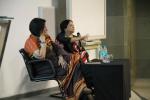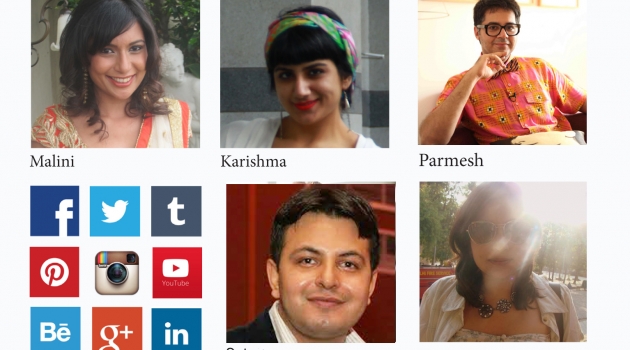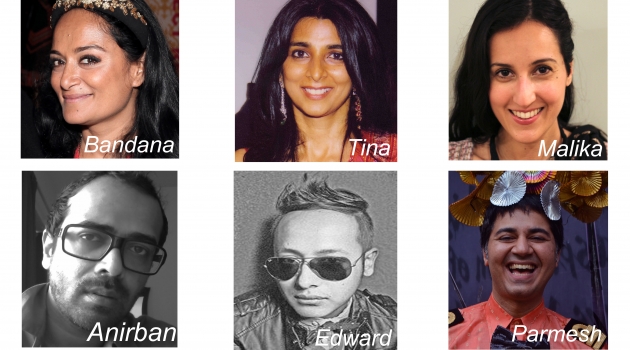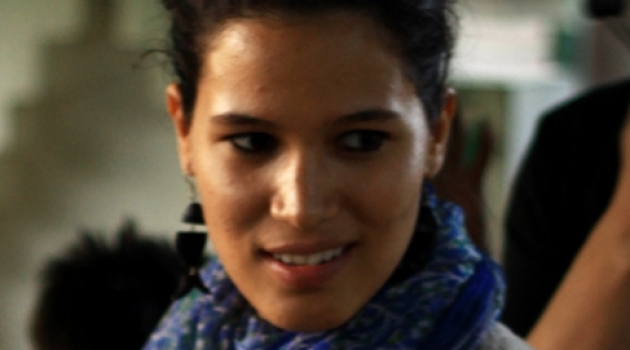Friday Fundas
Our regular speaker and performer series in Vikhroli has become a popular fixture on Mumbai’s event calendar. Join us on select Fridays of the month for these events and tell your friends about them as well. Most of our events are open to the public with RSVP.
Fashion Funda with Teach for India

The Godrej India Culture Lab had a special Fashion Funda on 27 September 2013, in the middle of our verdant vibrant #VivaVikhroli campus. *Is social media the new front row in fashion?* We curated a very special panel of social media experts that tried to answer this question. The panel included Saket Dhankar (Head-Fashion at IMG Reliance), Malini Agarwal (founder and Blogger-in-Chief of MissMalini), Pearl Shah (celebrity stylist and former Fashion Director of Marie Claire), Karishma Rajani (Writer & Blogger at the personal style blog...27 September 2013
Continue to EventJourneys for Water : Design thinking and connectivity to bring water for all

Over the next twenty years in India, an estimated 220 million people will move from the countryside to cities with many resettling in urban slums. With migration comes increased demand for utilities, including the need for clean drinking water. Already a daily struggle, a failure to secure clean water creates significant social and economic upheaval, shaping the very fabric of city life.30 August 2013
Continue to EventFashion: Runway-Wardrobe-Street. A Pop Up Friday Funda at Lakme Fashion Week

The Godrej India Culture Lab hosted this Pop Up Friday Funda live at Lakmé Fashion Week Winter/Festive 2013. Cool designs and smoking hot ideas came together in this very special event, for which a zany mural by artist Amrita Bagchi (from Visual Disobedience) served as the backdrop. There was a Panel Discussion on how fashion translates itself from runway to wardrobe to street moderated by Parmesh Shahani, head of the Godrej India Culture Lab.23 August 2013
Continue to EventImage and Word

In 2012, comic book artists Vidyun Sabhaney and Shohei Emura studied three visual storytelling traditions in India with a view to understand how they use sequential images to give life to the epics. The forms chosen for this were: Togalu Gombeyatta, Bengali Pat painting and performance, and Rajasthani Kaavad. During the course of the study, it was found that in a bid to remain relevant, each of these forms is adapting to our changing times in its own unique way. 28 June 2013
Continue to EventThe Freedom to Dance
Dance is a pure expression and experience of joy both for the dancer and the spectator. But Indian classical dance is often caught in the grip of the exalted position it has built for itself as a national symbol, alienating audiences and actually restricting performers from exploring the delight of dance. Is it at all possible to claim a space of play, accessibility and engagement for classical dance, to entice it down from its unreachable pedestal, and dialogue intelligently with it over a cup...31 May 2013
Continue to EventLearning From World’s End

His story relates to an extraordinary set of circumstances connected to an Antarctic Expedition led by Sir Ernest Shackleton 100 years ago. All the circumstances combined to make this the most incredible survival story of all - with the entire team emerging alive to tell the tale! 17 May 2013
Continue to EventWomen and Leadership in India

Roopa Purushothaman is passionate about leadership and girls education. She is the founder of Avasara, an educational non-profit organization which develops the leadership potential of India's brightest young women. She is also an economist and the Head of Research at Everstone Capital. Roopa has written extensively on demographics, education, income and consumption patterns. 3 May 2013
Continue to EventKitsch Kitsch Hota Hai

Sensuous, sublime, highbrow, garish….kitsch which refers to simple objects from daily life like calendar art, cinema posters, mass-produced models of iconic places like the Taj Mahal, posters of gods and goddesses, and more…has over the years, grown to mean many things to many people, in India and all around the world. It is loved and hated in equal measure as a symbol of Indianness. 8 March 2013
Continue to Event




